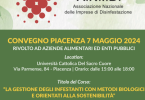Pest Management is a critical component of food safety programs worldwide. Production facilities, as well as food retail facilities and restaurants, are all at risk for attracting such pests as rodents, cockroaches, ants and birds, due in large part to the very nature of their business. These facilities provide the ideal conditions many pests need to thrive: food, water, and shelter.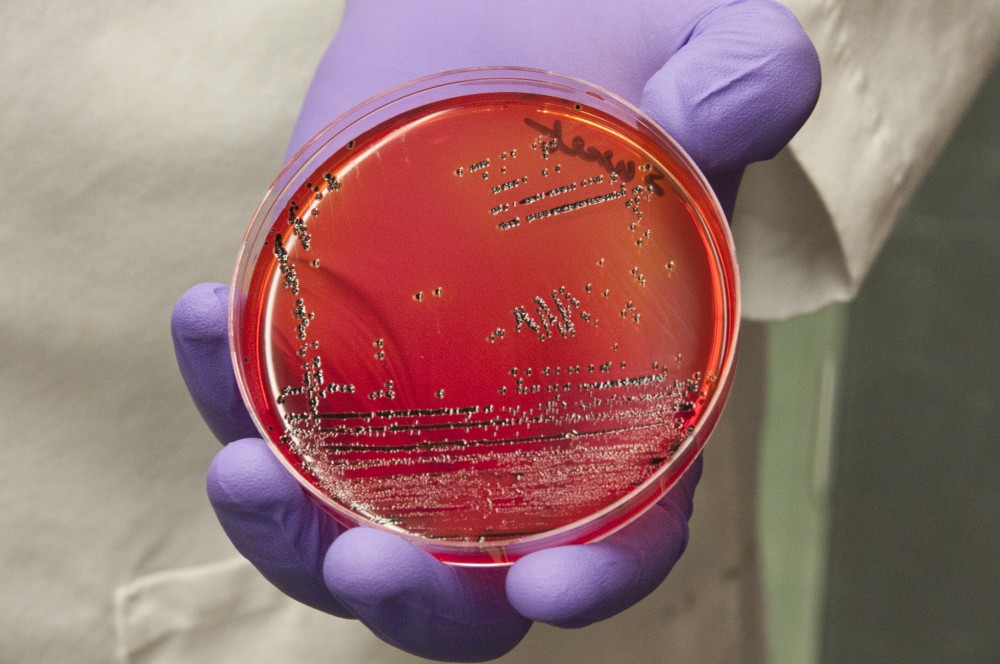
Although they can be magnets for pests, food facilities must be vigilant in their fight against infestation, as rodents and insects can carry harmful bacteria that can contaminate food and result in widespread illness outbreaks. An infestation can have a detrimental effect on a business’s reputation with customers, employees and the community, not to mention eat away at profits by damaging food inventory, property and the chances of repeat business.
When it comes to foodborne diseases, the U.S. Centers for Disease Control and Prevention estimates that each year, roughly 1 in 6 Americans gets sick, 128,000 people are hospitalized and more than 3,000 people die from various foodborne illnesses. Different disease-causing microbes or pathogens can contaminate food and food surfaces and can be introduced to various environments often during food processing or handling, which in turn can lead to illness.
Working with a pest management professional to develop an integrated pest management (IPM) program specific to the needs of the food facility is essential to reduce future pest problems and ultimately protect the business’s bottom line.
Government Regulations
Pest management professionals not only work to prevent potential pest problems, but they also can help food facility directors adhere to ever-changing food safety regulations. Licensed and qualified pest management professionals conduct a thorough inspection of the facility and work to identify conditions that are conducive to pest activity, helping eliminate potential problem areas and contaminants.
The U.S. Food and Drug Administration (FDA)’s Food Safety Modernization Act (FSMA) regulations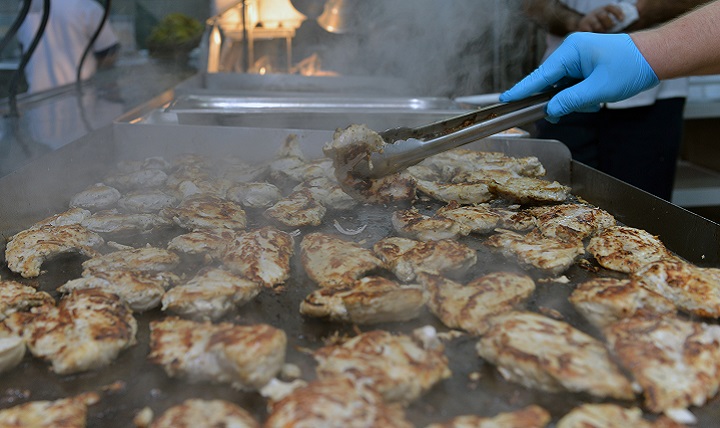 aim to ensure the U.S. food supply is safe by shifting the focus from responding to contamination to preventing it. Proper pest management is a critical component in preventing contamination. As every facility that handles food has its own set of unique rules and regulations to ensure contamination is at a minimum, it is essential that programs developed to prevent contamination are particular to each facility.
aim to ensure the U.S. food supply is safe by shifting the focus from responding to contamination to preventing it. Proper pest management is a critical component in preventing contamination. As every facility that handles food has its own set of unique rules and regulations to ensure contamination is at a minimum, it is essential that programs developed to prevent contamination are particular to each facility.
In recent years, FSMA has generated numerous regulations and preventive control measures to minimize or prevent the occurrence of contamination and foodborne illness. Recently, FDA passed the Preventive Controls for Human Food rule, which could start to impact some businesses’ compliance standards as early as September 2016. This rule requires facilities to establish and implement a food safety system that includes an analysis of hazards and risk-based preventive controls. Under this rule, food facilities will be required to evaluate their operations, identify hazards or areas of risk, implement measures to prevent contamination and develop an action plan to counter contamination if it occurs. Largely, this rule focuses on increased documentation, accountability and corrective actions for food facilities nationwide. One of the best ways facilities can comply with this new rule is to implement a rigorous pest management program.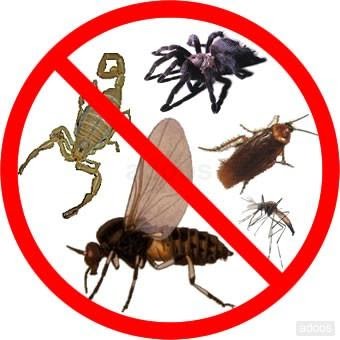
Overall, the Preventive Controls for Human Food rule allows facilities to identify and evaluate known or reasonably foreseeable contamination hazards that may be associated with the facility. This includes, but is not limited to, biological, chemical, physical and radiological hazards, natural toxins, pesticides, drug residues, decomposition, parasites, allergens and unapproved food and color additives.
FDA and its third-party auditors also have more access to food handling facilities and can conduct unannounced inspections under this rule. This makes it crucial for facilities to ensure that a strong pest management program is in place. An effective pest management program should include a professional pest management partner to implement an IPM program, conduct regular inspections and report on findings. These inspections should occur at least once a month in addition to proactive pest-proofing measures and the development of an action plan that can be used if and when a potential infestation occurs. Pest infestations, as well as potential areas of risk, are not always obvious but can easily be uncovered by trained professionals.
Types of Food Facilities
Various types of facilities handle food products each and every day. Each facility has its own unique risks for attracting pests, as well as standards and rules that pest management professionals must adhere to when servicing these sites. As FSMA also continues to apply new rules that address ongoing contamination concerns, food facilities need to be diligent in staying abreast of these updates to ensure they are following proper protocol. Overall, there are a few segments of the food industry that are at a high risk for attracting pests.
Dry-Food Facilities
Dry-food facilities process foods and products of a dry nature that can produce airborne material. These facilities include, but are not limited to, flour mills, rice mills, mix plants, confectionary or candy production, feed mills and seed and bean processing. These facilities can attract a multitude of pests, which vary with the material being processed. In general, dry-food facilities are susceptible to pests that can survive for long periods without easy access to water, such as beetles, rodents, and birds.
Dry-food facilities face a unique challenge as dust from production can accumulate along ducts, electrical panels and in cracks and crevices. This provides a food source for pests that can be difficult to remove by cleaning alone. In fact, some facilities use compressed air to clean this layer of dust; however, compressed air works by scattering the air, and therefore the dust, throughout the facility. This can disperse insect eggs or adult insects that are also in the area throughout the building and spread the infestation. Thus, compressed air is not considered an effective method of cleanup. Instead, facilities should implement a vacuuming method to collect dust and insect eggs/adult insects without spreading any mess or infestation throughout the facility.
Wet or Liquid-Food Facilities
Wet or liquid-food facilities often have a moist environment. These facilities include, but are not limited to, beverage plants, bottling plants, breweries, canning facilities, dairies and wineries. In general, the high levels of moisture in these facilities will support pests that need water to thrive, such as cockroaches and flies.
Wet or liquid-food facilities typically use wet cleanup procedures to sanitize equipment. In addition to the liquid-food products in the facility, the moisture attributed to these cleaning processes can contribute to an increased pest presence. As these cleaning processes are unavoidable, these types of facilities need to implement proper water-management systems and drainage so they can appropriately accommodate the quantities of wastewater generated in these processes. Additionally, the use of air curtains can help prevent the entry of flying insects.
Food Retail
The food retail category includes a large array of settings, such as bodegas, grocery stores and supermarkets. As these facilities vary greatly in size, they can attract a variety of pests, such as cockroaches, flies, rodents and the occasional bird or squirrel. Additionally, some pests that infest retail facilities will be location dependent.
Food retail facilities not only need to worry about the contamination of the products they sell, but they also need to be concerned about pest presence in terms of how it will affect business. A heightened pest presence, especially when noticed by customers, can negatively impact the business’s reputation and therefore impact profits. These facilities should implement prevention controls such as air curtains and door sweeps, which can help deter the entry of small flying insects.
Restaurants and Foodservice Facilities
An infestation in a restaurant setting can result in more than just food contamination. Just one pest-related incident can lead to hefty fines from health departments, damage to the restaurant’s reputation and temporary or, in more severe cases, permanent closure.
As with food retail facilities, a varied array of pests, such as cockroaches, flies, rodents and ants, tend to be of the utmost concern for restaurant operators. Restaurateurs need to implement stringent preventive controls, including a strong pest management program with regular inspections to combat potential contamination resulting from pests.
Schools and commercial kitchens also face unique challenges when it comes to pest management, as they typically feed large quantities of people and are responsible for protecting their well-being from serious health threats posed by pests.
Working with a pest management professional can help food facility managers, retail managers and restaurant owners determine areas of risk, as well as which prevention techniques should be implemented to deter potential pest infestations.
Key Pests
If they are not already, pests should be a key concern for food facility directors as they can carry viruses and bacteria, which they leave behind by touching the same food and kitchen surfaces as employees and food items. The viruses and bacteria found on pests can spread to and sicken humans. The feces and urine of pests can also spread disease, as well as cause respiratory issues for many individuals.
As FSMA focuses on preventing contamination and therefore foodborne illnesses, it is essential for food facilities, no matter the setting in which they work, to have an understanding of their unique pest risk and how to counter the risk with an effective pest management program.
Pest management in food handling facilities can be difficult as every facility and situation is different. While FSMA helps regulate the standards for these facilities, each may also have a different set of rules and regulations it needs to abide by. A licensed and qualified pest management professional can help facility management identify risk and know and understand specific pest traits that make gaining control much easier. While the types of pests that can infest these facilities vary, depending on facility as well as location, there are a few pests that should be in the crosshairs of everyone’s radar:
Cockroaches
Cockroaches are resilient pests and among the most important pests in commercial establishments. Not only are they a nuisance, but they are also known to carry many common disease pathogens and can cause allergic reactions in many people. The most common pathogens carried by cockroaches are Salmonella and Escherichia coli, which can spread to food and food preparation surfaces, sickening humans. Cockroaches thrive in cracks and crevices and will feed on practically anything of nutritional value. They are most attracted to environments where food and moisture are present.
Flies
Flies are considered one of the most visible pests and require a long-term solution that relies on prevention and sanitation. Not only are flies a nuisance pest, but many also are critical in disease transmission. For example, the common housefly has been found to carry more than 100 different pathogenic organisms.
Fly control is challenging, as their larval development sites must be located and eliminated for success. These sites are often located quite a distance from where adult flies are present.
Rodents
Rodents, such as mice and rats, can thrive in many situations and are difficult to keep out of structures. In fact, mice can squeeze 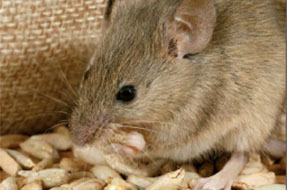 through spaces as small as a dime and rats can fit through holes the size of a quarter. In addition to spreading disease, rodents can carry other organisms, such as fleas and ticks. Once inside the structure, rodents, such as Norway rats, can cause structural damage by gnawing through wires, contaminate food and introduce other pests into the facility.
through spaces as small as a dime and rats can fit through holes the size of a quarter. In addition to spreading disease, rodents can carry other organisms, such as fleas and ticks. Once inside the structure, rodents, such as Norway rats, can cause structural damage by gnawing through wires, contaminate food and introduce other pests into the facility.
Ants
Ants have been reported as one of the largest pest problems faced in food facilities. Ants are social insects that feed on practically every kind of food and are one of the most difficult pests to control in facilities. As the biology and habits of each ant species differ, it’s important to work with a licensed pest professional in the identification of ant hot spots and other factors that may be conducive to ant activity.
Birds
Birds are considered more of an occasional invader pest that can pose a serious problem in facilities. Depending on the time of year, birds may be looking for a place to nest—and food-related facilities can provide the perfect refuge. In addition to being a nuisance, birds may damage or destroy property, eat and contaminate food items and are a health concern as bird droppings are a common source of respiratory fungal disease.
Employees
Although this is not commonly discussed, employees can also contribute to introducing pest problems to food facilities as they can bring pests such as cockroaches, ants or bedbugs from home. Proper employee sanitation procedures should be implemented before and after employees touch and interact with food processing equipment to help prevent potential infestations.
Integrated Pest Management
To comply with FSMA, the best method for pest control in food facilities is to follow an IPM program whereby facility managers and pest management professionals collaborate in the identification of pest hot spots, proper sanitation practices and pest prevention procedures. Not only is IPM a method that focuses on eliminating sources of food, water and shelter, but it can also provide effective pest control in a proactive, sustainable manner. This can be especially useful for facilities that are required to follow strict regulations.
Oftentimes, pest management can be challenging on a small scale, but it may also seem overwhelming in larger instances such as in food processing facilities and warehouses. The bottom line is that working with a pest management professional is essential to handle the wide array of pest problems that can occur in various environments. Pest management professionals have the training and experience to overcome the most difficult pest problems and can help food handling facilities adhere to the strict and ever-changing regulations that ensure food safety.
Authors:
Jim Fredericks, Ph.D., chief entomologist and vice president of technical and regulatory affairs for the National Pest Management Association (NPMA).
Cindy Mannes, NPMA’s vice president of public affairs and executive director of the Professional Pest Management Alliance.
Source: Foodsafetymagazine

